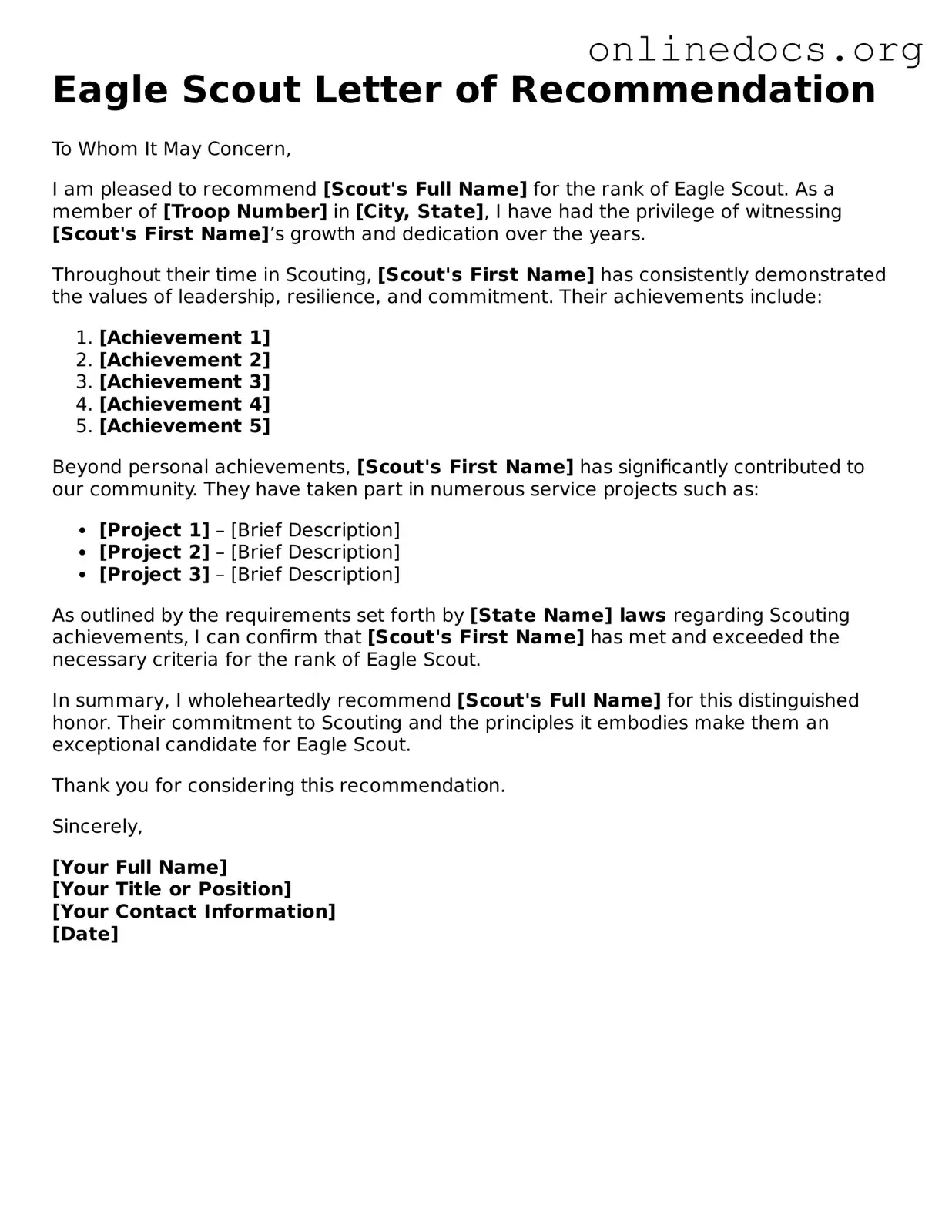The Eagle Scout Letter of Recommendation form shares similarities with the College Letter of Recommendation. Both documents serve to endorse an individual, highlighting their character, achievements, and potential. In the context of college applications, a teacher or mentor often writes this letter, focusing on the student’s academic performance and personal qualities. Just as the Eagle Scout form requires input from community members who know the scout well, college recommendation letters rely on insights from those who can speak to the applicant's capabilities and readiness for higher education.
Another document comparable to the Eagle Scout Letter of Recommendation is the Job Reference Letter. When applying for a job, candidates often request references from previous employers or colleagues. These letters detail the individual’s work ethic, skills, and contributions in a professional setting. Similarly, the Eagle Scout recommendation emphasizes the scout's leadership, service, and commitment to the values of scouting, showcasing how these traits translate into future endeavors.
The Graduate School Letter of Recommendation is also akin to the Eagle Scout form. This document is typically provided by professors or supervisors who can attest to a candidate’s academic prowess and research capabilities. Just like the Eagle Scout recommendations, these letters aim to present a well-rounded view of the individual, focusing on their strengths and potential for success in advanced studies.
Similarly, the Professional Certification Reference Letter serves a comparable purpose. When individuals seek certification in a specific field, they often need to provide letters from professionals who can vouch for their skills and experiences. This mirrors the Eagle Scout recommendation process, where individuals in the scout’s life provide validation of their accomplishments and character, reinforcing their readiness for the Eagle Scout rank.
The Character Reference Letter is another document that aligns closely with the Eagle Scout Letter of Recommendation. These letters are often requested in various contexts, such as legal situations or personal matters, where an individual’s character and integrity are being evaluated. Both types of letters aim to highlight the positive attributes of the individual, emphasizing their moral standing and contributions to the community.
The Mentor Reference Letter also shares similarities with the Eagle Scout recommendation. Mentors often write letters for their mentees when they apply for scholarships or programs, detailing the mentee’s growth and achievements. Much like the Eagle Scout form, this document seeks to provide a personal perspective on the individual’s journey, showcasing their dedication and potential for future success.
The Scholarship Recommendation Letter is yet another document that parallels the Eagle Scout Letter of Recommendation. When students apply for scholarships, they often need letters that speak to their academic achievements and community involvement. These letters, like the Eagle Scout recommendations, aim to provide insight into the applicant’s character and contributions, helping to paint a comprehensive picture for the selection committee.
For those seeking guidance on the application process, an effective resource is the understanding of a Sorority Recommendation Letter template, which aids in showcasing a prospective member’s strengths and character effectively.
The Volunteer Reference Letter is similar as well. Organizations often request letters from volunteers to highlight their contributions and commitment to service. This type of letter, like the Eagle Scout recommendation, emphasizes the importance of community service and the impact the individual has made, showcasing their dedication to helping others.
Lastly, the Personal Reference Letter can be compared to the Eagle Scout Letter of Recommendation. These letters are often used in various applications, from housing to job searches, providing a personal account of an individual's character and reliability. Both documents aim to offer a supportive narrative that illustrates the individual’s strengths and suitability for the opportunity they are pursuing.
